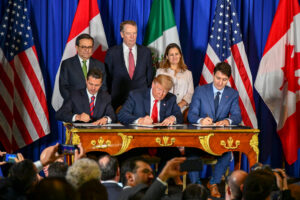The focus of Canada's dialogue surrounding the opioid epidemic has transitioned significantly, influenced by U.S. political rhetoric, particularly from President Trump on fentanyl trafficking. This has led the Canadian government to implement stricter border controls while still addressing domestic drug-related challenges.
Canada's Opioid Crisis Takes a New Turn Amidst U.S. Border Concerns

Canada's Opioid Crisis Takes a New Turn Amidst U.S. Border Concerns
As attention shifts from public health strategies to border security in response to claims from President Trump, Canada grapples with the evolving opioid crisis.
The conversation around opioids in Canada is taking a noticeable turn compared to last year. Instead of concentrating mainly on health approaches to combat the alarming rate of opioid-related fatalities—especially highlighted during British Columbia’s rollback on drug decriminalization—the narrative has pivoted towards addressing drug trafficking, particularly on the border with the United States.
This shift is largely credited to remarks made by former President Trump, who has characterized Canadian criminals as major players in the illegal fentanyl trade, using the situation as justification for imposing punitive tariffs against Canada. Statistics reveal that Canada accounts for less than 1 percent of the fentanyl seized by U.S. Customs and Border Protection, yet the Canadian government has reacted by significantly increasing border security efforts.
In response to the perceived threat of fentanyl smuggling, Canada has established the role of a “fentanyl czar” and invested millions in initiatives to gather intelligence and bolster the capacity of the Canada Border Services Agency. My personal experience with this agency, during my time assisting in the Toronto regional offices, showcases their evolving strategy—viewing the border not simply as a fixed geographical location, but as an expansive barrier that must encompass threat detection long before they arrive at Canadian shores.
Fentanyl is known for its high profit margins for trafficking networks; for instance, 500 grams—roughly equivalent to the weight of four bananas—can fetch a staggering street value exceeding 30,000 Canadian dollars. This reality underscores the urgent need for improved interventions, as Canada navigates its next steps in addressing the opioid crisis alongside strengthening border control amid changing political pressures.























